
Diabetes can create a perfect storm of complications which sometimes leads to ulcers on the feet that go undetected and don’t heal. While the overwhelming majority of foot ulcers heal with proper foot care and treatment, a foot ulcer that does not heal may lead to infection, tissue necrosis (dead tissue), and—in severe cases—amputation. Diabetic limb salvage is a complex process involving a variety of procedures and techniques with the goal of preserving the limb as much as possible, and reducing the risks of future infections and ulcerations. If you have questions about diabetic foot conditions or would like to know more regarding limb salvage, it is highly suggested that you seek the counsel of a podiatrist.
Limb salvage can be an effective way in preventing the need for limb amputation. If you have diabetes, cancer, or any other condition that could lead to foot amputation if left unchecked, consult with Dr. Stephan J. LaPointe from Georgia Foot & Ankle Specialists . Our doctor will assess your condition and provide you with quality foot and ankle treatment.
What Is Limb Salvage?
Limb salvage is the attempt of saving a limb, such as the foot from amputation. Podiatrists also try to make sure that there is enough function in the foot after the salvage that it is still usable. Diabetes is the number one cause of non-traumatic amputations in the United States. Those with diabetes experience poor blood circulation, which prevents proper healing of an ulcer. If the ulcer is left uncheck, it could become infected, which could result in the need for amputation.
However, there are other causes as well, such as cancer and traumatic injury. Links between higher mortality rates and amputation have been found. This translates into higher healthcare costs, and a reduced quality of life and mobility for amputees. Podiatrists have attempted to increase the prevalence of limb salvage in an attempt to solve these issues.
Diagnosis and Treatment
Limb salvage teams have grown in recent years that utilize a number of different treatments to save the infected limb. This includes podiatrists that specialize in wound care, rehabilitation, orthotics, and surgery. Through a combination of these methods, limb salvage has been found to be an effective treatment for infected limbs, and as an alternative to amputation. Podiatrists will first evaluate the potential for limb salvage and determine if the limb can be saved or must be amputated.
If you have any questions, please feel free to contact our office located in Rome, GA . We offer the newest diagnostic and treatment technologies for all your foot care needs.
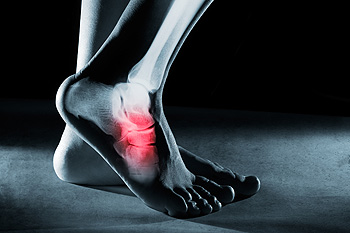 The feet are susceptible to a variety of ailments, and foot pain can impact all of our daily activities. Foot pain can impact the heel, arch, top of the foot, and even the ball of the foot. Plantar fasciitis is the most common source of heel pain, and the result of inflammation or a strain on the ligament connecting the toes to the heel. Plantar fasciitis can also lead to heel spurs which are bony growths that are formed under the heel because of calcium buildups. Bunions are bumps on the bottom of the big toe that occur when the big toe is pulled towards the rest of the foot. Hammer toes occur when the toes stay bent at the joints which can lead to painful corns and calluses. Diabetic patients are prone to developing neuropathy, which results in a tingling and burning sensation in the feet. Because of the variety of potential injuries, patients who are suffering from pain in the feet should visit with a podiatrist for a diagnosis.
The feet are susceptible to a variety of ailments, and foot pain can impact all of our daily activities. Foot pain can impact the heel, arch, top of the foot, and even the ball of the foot. Plantar fasciitis is the most common source of heel pain, and the result of inflammation or a strain on the ligament connecting the toes to the heel. Plantar fasciitis can also lead to heel spurs which are bony growths that are formed under the heel because of calcium buildups. Bunions are bumps on the bottom of the big toe that occur when the big toe is pulled towards the rest of the foot. Hammer toes occur when the toes stay bent at the joints which can lead to painful corns and calluses. Diabetic patients are prone to developing neuropathy, which results in a tingling and burning sensation in the feet. Because of the variety of potential injuries, patients who are suffering from pain in the feet should visit with a podiatrist for a diagnosis.
Foot Pain
Foot pain can be extremely painful and debilitating. If you have a foot pain, consult with Dr. Stephan J. LaPointe from Georgia Foot & Ankle Specialists . Our doctor will assess your condition and provide you with quality foot and ankle treatment.
Causes
Foot pain is a very broad condition that could be caused by one or more ailments. The most common include:
Diagnosis
To figure out the cause of foot pain, podiatrists utilize several different methods. This can range from simple visual inspections and sensation tests to X-rays and MRI scans. Prior medical history, family medical history, and any recent physical traumatic events will all be taken into consideration for a proper diagnosis.
Treatment
Treatment depends upon the cause of the foot pain. Whether it is resting, staying off the foot, or having surgery; podiatrists have a number of treatment options available for foot pain.
If you have any questions, please feel free to contact our office located in Rome, GA . We offer the newest diagnostic and treatment technologies for all your foot care needs.
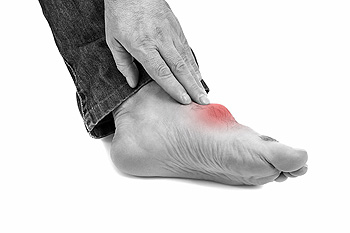 The most common form of inflammatory arthritis is referred to as gout. It is a condition that affects approximately four percent of Americans, and can be caused by genetic factors and eating habits. Common symptoms of this foot condition can include extreme tenderness, debilitating pain in the joints of the big toe, possibly causing difficulty in walking, and the toe may appear to be swollen. Some of the foods that can cause gout to develop include shellfish, red meat, and drinks that are made with large amounts of sugar. The pain comes from excess uric acid caused by elevated purine amounts that form in the joints, and can produce sensations that can feel like crystals in the feet. Mild relief may be found when lifestyle changes occur that include reducing the amount of food that is eaten with high purine levels. If you have frequent gout attacks, it is strongly advised that you are under the care of a podiatrist who can help you with proper treatment and prevention options.
The most common form of inflammatory arthritis is referred to as gout. It is a condition that affects approximately four percent of Americans, and can be caused by genetic factors and eating habits. Common symptoms of this foot condition can include extreme tenderness, debilitating pain in the joints of the big toe, possibly causing difficulty in walking, and the toe may appear to be swollen. Some of the foods that can cause gout to develop include shellfish, red meat, and drinks that are made with large amounts of sugar. The pain comes from excess uric acid caused by elevated purine amounts that form in the joints, and can produce sensations that can feel like crystals in the feet. Mild relief may be found when lifestyle changes occur that include reducing the amount of food that is eaten with high purine levels. If you have frequent gout attacks, it is strongly advised that you are under the care of a podiatrist who can help you with proper treatment and prevention options.
Gout is a foot condition that requires certain treatment and care. If you are seeking treatment, contact Dr. Stephan J. LaPointe from Georgia Foot & Ankle Specialists . Our doctor will treat your foot and ankle needs.
What Is Gout?
Gout is a type of arthritis caused by a buildup of uric acid in the bloodstream. It often develops in the foot, especially the big toe area, although it can manifest in other parts of the body as well. Gout can make walking and standing very painful and is especially common in diabetics and the obese.
People typically get gout because of a poor diet. Genetic predisposition is also a factor. The children of parents who have had gout frequently have a chance of developing it themselves.
Gout can easily be identified by redness and inflammation of the big toe and the surrounding areas of the foot. Other symptoms include extreme fatigue, joint pain, and running high fevers. Sometimes corticosteroid drugs can be prescribed to treat gout, but the best way to combat this disease is to get more exercise and eat a better diet.
If you have any questions please feel free to contact our office located in Rome, GA . We offer the newest diagnostic and treatment technologies for all your foot and ankle needs.
Flip-flops don’t offer the protection or support your feet need. While they may be appropriate for some limited use, they should not be worn for long periods of time. Their flimsy foam soles and lack of structure offer no arch support at all, which causes your feet to flatten and forces tendons and ligaments to compensate. This stress throughout your feet can cause heel spurs, bunions, flat feet, cracked heels and even plantar fasciitis. Additionally, their floppy “fit” makes your toes work harder to keep them on, which can cause hammertoes and put you at higher risk of twisted ankles, stubbed toes, and even trips and falls. If you would like more information about the danger of improper footwear or if you have any discomfort or pain in your feet, contact a podiatrist today.
Flip-flops are not always the best choice of footwear. If you have any concerns about your feet or ankles, contact Dr. Stephan J. LaPointe from Georgia Foot & Ankle Specialists . Our doctor will assist you with all of your foot and ankle needs.
Flip-Flops and Feet
When the weather starts warming up, people enjoy wearing flip-flops. Flip-flops are comfortable, stylish, and easy to slip on and off; they're perfect for any summer beach goer. However, these shoes can cause harm to the feet.
How Can Flip-Flops Affect Me Long-Term?
Are There Injuries Associated with Flip-Flops?
Yes. Since flip-flops are relatively weak and do not provide the same amount of support as sneakers, people who wear flip-flops regularly are more susceptible to injuries. On top of that, the open nature of the shoe makes your feet more prone to other problems, such as cuts and even infections. Common injuries and ailments include:
I like Wearing Flip-Flops. Are There Safe Alternatives?
When buying flip-flops, try to find ones that have sturdy soles and that are made of high-quality materials that will support for your feet. These flip-flops will cost more but will also last longer as a result.
If you have any questions please feel free to contact our office located in Rome, GA . We offer the newest diagnostic and treatment technologies for all your foot and ankle needs.
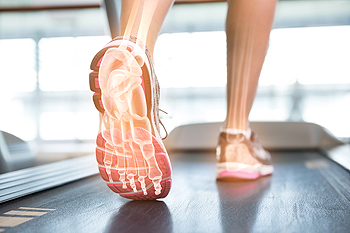 As we age, biomechanics—the study of structure, function and movement—become more important to our foot health. Aging causes tissues in our feet to stiffen and the range of motion and joint mobility to decrease, and we tend to put weight more on the inside of our feet—causing them to flatten and reduce the amount of force we have pushing forward when we walk. These are just some of the contributors to our propensity to experience foot pain and even increase our risk of falling as we get older. However there is hope. There are some exciting advancements in biomechanics—specifically footwear and orthotic devices—that can help improve foot health in older adults by adjusting gait and redistributing pressure away from certain areas of the foot which helps increase mobility and reduce pain. If you or someone you love is experiencing pain in the feet or reduced mobility, contact a podiatrist who may be able to help you feel and walk better.
As we age, biomechanics—the study of structure, function and movement—become more important to our foot health. Aging causes tissues in our feet to stiffen and the range of motion and joint mobility to decrease, and we tend to put weight more on the inside of our feet—causing them to flatten and reduce the amount of force we have pushing forward when we walk. These are just some of the contributors to our propensity to experience foot pain and even increase our risk of falling as we get older. However there is hope. There are some exciting advancements in biomechanics—specifically footwear and orthotic devices—that can help improve foot health in older adults by adjusting gait and redistributing pressure away from certain areas of the foot which helps increase mobility and reduce pain. If you or someone you love is experiencing pain in the feet or reduced mobility, contact a podiatrist who may be able to help you feel and walk better.
If you need your feet checked, contact Dr. Stephan J. LaPointe of Georgia Foot & Ankle Specialists . Our doctor will attend to all of your foot and ankle needs and provide you with quality treatment.
Geriatrics and Podiatry
When people age, some common issues that may occur are bone density loss, dry skin, poor circulation, and rough brittle nails. These issues may also affect your foot health if the necessary steps are not taken to alleviate the problems.
It is important to take care of your feet because feet that are injured or diseased can affect your overall health. Having painful feet hinders your ability to do daily activities or may decrease your willingness to do the things that you need to do.
Visiting Your Geriatrician
As we age, health problems become more likely, so it is essential to visit your doctor for check-ups to ensure that you are doing the best you can to take care of your health. It is recommended to check your feet frequently for any possible cuts, bruises, swelling, corns or any other irregularities.
Taking Care of Elderly Feet
Cracked or dry feet can be treated by applying moisturizer often. It is also important not to wear old socks because the older the sock is, the higher the possibility there will be that there is bacteria there. Wear fresh socks and make sure they fit properly.
Proper foot health means that you can have a more active lifestyle and you will not be bogged down by pain. Foot health also leads to good circulation, which is paramount for overall health.
If you have any questions, please feel free to contact our office located in Rome, GA . We offer the newest diagnostic tools and technology to treat your foot and ankle needs.
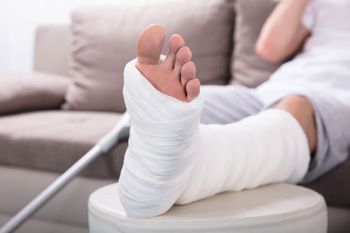 Sprains and fractures in the foot, are both common injuries with fairly similar symptoms. Sprains occur when a ligament is overstretched or torn. Symptoms of a foot sprain include pain around the arch of the foot, bruising, swelling, tenderness, and difficulty walking. Foot fractures occur when one or more of the bones in the foot break. Symptoms of a foot fracture include intense pain that worsens during physical activity, swelling, bruising, tenderness, difficulty walking, and a foot deformity. You may also hear a cracking sound at the time of injury if the fracture is severe. If you are experiencing symptoms of a foot sprain or a fracture, it is suggested that you seek the care of a podiatrist, who can properly diagnose and treat your condition.
Sprains and fractures in the foot, are both common injuries with fairly similar symptoms. Sprains occur when a ligament is overstretched or torn. Symptoms of a foot sprain include pain around the arch of the foot, bruising, swelling, tenderness, and difficulty walking. Foot fractures occur when one or more of the bones in the foot break. Symptoms of a foot fracture include intense pain that worsens during physical activity, swelling, bruising, tenderness, difficulty walking, and a foot deformity. You may also hear a cracking sound at the time of injury if the fracture is severe. If you are experiencing symptoms of a foot sprain or a fracture, it is suggested that you seek the care of a podiatrist, who can properly diagnose and treat your condition.
A broken foot requires immediate medical attention and treatment. If you need your feet checked, contact Dr. Stephan J. LaPointe from Georgia Foot & Ankle Specialists . Our doctor can provide the care you need to keep you pain-free and on your feet.
Broken Foot Causes, Symptoms, and Treatment
A broken foot is caused by one of the bones in the foot typically breaking when bended, crushed, or stretched beyond its natural capabilities. Usually the location of the fracture indicates how the break occurred, whether it was through an object, fall, or any other type of injury.
Common Symptoms of Broken Feet:
Those that suspect they have a broken foot shoot seek urgent medical attention where a medical professional could diagnose the severity.
Treatment for broken bones varies depending on the cause, severity and location. Some will require the use of splints, casts or crutches while others could even involve surgery to repair the broken bones. Personal care includes the use of ice and keeping the foot stabilized and elevated.
If you have any questions please feel free to contact our office located in Rome, GA . We offer the newest diagnostic and treatment technologies for all your foot and ankle needs.
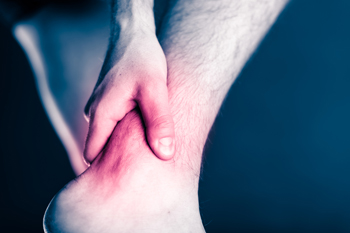 Tendons, blood vessels, and nerves—such as the tibial nerve which provides feeling and mobility in the foot—travel through the tarsal tunnel in the ankle. When the tibial nerve gets constricted or damaged, Tarsal Tunnel Syndrome can occur. This condition produces tingling or numbness, pain, and a weakening in muscles and various parts of the foot. It can be triggered by swelling, abnormal growths in bones and joints, varicose veins, abnormal arches, and various systemic diseases. A complete recovery is possible if the condition is diagnosed and treated in its early stages. To avoid permanent complications such as pain, numbness, and immobility, it is suggested to consult with a podiatrist who can provide a variety of treatments and therapies.
Tendons, blood vessels, and nerves—such as the tibial nerve which provides feeling and mobility in the foot—travel through the tarsal tunnel in the ankle. When the tibial nerve gets constricted or damaged, Tarsal Tunnel Syndrome can occur. This condition produces tingling or numbness, pain, and a weakening in muscles and various parts of the foot. It can be triggered by swelling, abnormal growths in bones and joints, varicose veins, abnormal arches, and various systemic diseases. A complete recovery is possible if the condition is diagnosed and treated in its early stages. To avoid permanent complications such as pain, numbness, and immobility, it is suggested to consult with a podiatrist who can provide a variety of treatments and therapies.
Tarsal tunnel syndrome can be very uncomfortable to live with. If you are experiencing tarsal tunnel syndrome, contact Dr. Stephan J. LaPointe of Georgia Foot & Ankle Specialists . Our doctor can provide the care you need to keep you pain-free and on your feet.
Tarsal Tunnel Syndrome
Tarsal tunnel syndrome, which can also be called tibial nerve dysfunction, is an uncommon condition of misfiring peripheral nerves in the foot. The tibial nerve is the peripheral nerve in the leg responsible for sensation and movement of the foot and calf muscles. In tarsal tunnel syndrome, the tibial nerve is damaged, causing problems with movement and feeling in the foot of the affected leg.
Common Cause of Tarsal Tunnel Syndrome
The Effects of Tarsal Tunnel Syndrome
A physical exam of the leg can help identify the presence of tarsal tunnel syndrome. Medical tests, such as a nerve biopsy, are also used to diagnose the condition. Patients may receive physical therapy and prescriptive medication. In extreme cases, some may require surgery.
If you have any questions please feel free to contact our office located in Rome, GA . We offer the newest diagnostic and treatment technologies for all your foot and ankle needs.
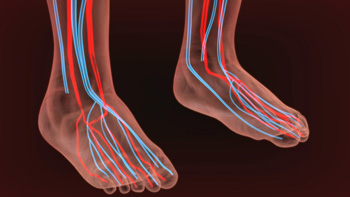 When poor circulation, or reduced blood flow affects your lower limbs, you may notice your feet feeling cold or numb and your skin turning red, blue, purple, or white. You may also notice dry skin, hair loss on the legs or feet, weakened toenails, and slow wound healing. There are many possible causes for poor circulation in the feet. Both Raynaud’s disease and acrocyanosis cause blood vessels in the extremities to constrict, leading to reduced blood flow and the affected area becoming cold, numb, and discolored. Diabetes damages the blood vessels, affecting circulation. Arteriosclerosis, in which the arteries harden due to plaque buildup, and peripheral artery disease, which occurs when arteriosclerosis progresses without treatment, are also very common culprits of impaired blood flow to the feet. If you have the symptoms of poor circulation in your feet, it is suggested that you seek the care of a podiatrist.
When poor circulation, or reduced blood flow affects your lower limbs, you may notice your feet feeling cold or numb and your skin turning red, blue, purple, or white. You may also notice dry skin, hair loss on the legs or feet, weakened toenails, and slow wound healing. There are many possible causes for poor circulation in the feet. Both Raynaud’s disease and acrocyanosis cause blood vessels in the extremities to constrict, leading to reduced blood flow and the affected area becoming cold, numb, and discolored. Diabetes damages the blood vessels, affecting circulation. Arteriosclerosis, in which the arteries harden due to plaque buildup, and peripheral artery disease, which occurs when arteriosclerosis progresses without treatment, are also very common culprits of impaired blood flow to the feet. If you have the symptoms of poor circulation in your feet, it is suggested that you seek the care of a podiatrist.
Poor circulation is a serious condition and needs immediate medical attention. If you have any concerns with poor circulation in your feet contact Dr. Stephan J. LaPointe of Georgia Foot & Ankle Specialists . Our doctor will treat your foot and ankle needs.
Poor Circulation in the Feet
Poor blood circulation in the feet and legs is can be caused by peripheral artery disease (PAD), which is the result of a buildup of plaque in the arteries.
Plaque buildup or atherosclerosis results from excess calcium and cholesterol in the bloodstream. This can restrict the amount of blood which can flow through the arteries. Poor blood circulation in the feet and legs are sometimes caused by inflammation in the blood vessels, known as vasculitis.
Causes
Lack of oxygen and oxygen from poor blood circulation restricts muscle growth and development. It can also cause:
Those who have diabetes or smoke are at greatest risk for poor circulation, as are those who are over 50. If you have poor circulation in the feet and legs it may be caused by PAD and is important to make changes to your lifestyle in order to reduce risk of getting a heart attack or stroke. Exercise and maintaining a healthy lifestyle will dramatically improve conditions.
As always, see a podiatrist as he or she will assist in finding a regimen that suits you. A podiatrist can also prescribe you any needed medication.
If you have any questions please feel free to contact our office located in Rome, GA . We offer the newest diagnostic and treatment technologies for all your foot and ankle needs.